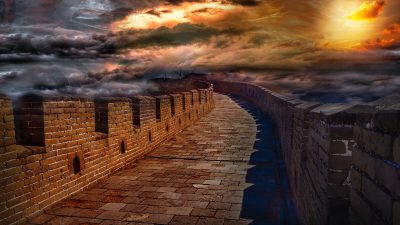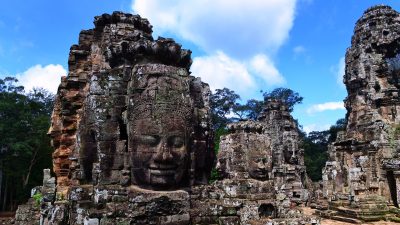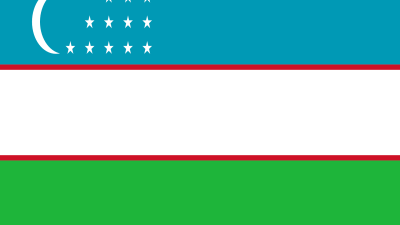A Nation Shaken By Nature And Neglect
On 21st June 1990, Iran experienced one of its most catastrophic natural disasters when a 7.4 magnitude earthquake struck the northern provinces of Gilan and Zanjan. The powerful tremor, lasting only a minute, left an enormous trail of destruction, claiming the lives of over 40,000 people and injuring countless others. Entire communities were flattened, and buildings like homes, schools, and hospitals were reduced to rubble.
Despite Iran’s history of frequent seismic activity, the scale of this disaster revealed significant weaknesses in infrastructure and emergency management. The Manjil–Rudbar Earthquake wasn’t just a natural calamity but a painful indicator of Iran’s unreadiness and systemic failures in handling such a crisis.
# The True Toll: The Human Impact of the Manjil–Rudbar Earthquake
The reported death toll of over 40,000 only tells part of the story. Striking in the middle of the night, the earthquake caught many people by surprise. Families were buried under collapsed buildings, and those who survived were left to mourn the loss of their loved ones amid the devastation.
Over 500,000 people were displaced, facing extreme hardship with minimal access to necessities like food, clean water, and medical care. The emotional scars were deep—children left without parents, families torn apart, and communities decimated. Survivors still carry the trauma of that night, which lingers long after the rubble was cleared.
# A Disaster in the Making: Why Iran Was Unprepared
- Weak Construction: The Collapse Was Foreseeable
Many of Iran’s buildings, built with unreinforced masonry, crumbled under the quake’s force, trapping countless residents beneath the debris. - Lack of Emergency Plans: Chaos and Confusion Ensued
Without a well-established disaster response system, rescue operations were delayed and inefficient. Unpreparedness led to avoidable fatalities, as help arrived too late for many victims. - Inadequate Communication: Delayed Assistance
The destruction of communication infrastructure hampered coordination efforts, leaving survivors stranded as authorities struggled to assess the damage.
# The Government’s Response: Failing the People
The Iranian government faced severe criticism for its delayed and ineffective response to the earthquake. In the crucial hours following the tremor, rescue teams were slow to mobilise, leaving victims trapped under debris. Aid distribution was chaotic, and some areas didn’t receive assistance for several days.
Corruption allegations also clouded the relief efforts, with questions raised about the management of international aid and local resources. This led to public protests and outcry, as citizens demanded accountability from officials who had long overlooked Iran’s vulnerability to seismic disasters.
# Nature vs. Neglect: Was the Earthquake’s Death Toll Preventable?
While the 7.4 magnitude earthquake was a powerful natural event, many experts believe that the massive death toll was not solely the fault of nature. Iran had long been warned about its substandard infrastructure, but little action was taken to enforce earthquake-resistant building standards.
It is believed that thousands of lives could have been spared had proper safety measures been implemented. Instead, the disaster highlighted years of negligence, where cost-saving measures and a lack of building code enforcement turned a natural disaster into a full-blown humanitarian crisis.
# The Struggle to Rebuild: Iran’s Long Road to Recovery
Reconstruction efforts were slow and difficult. Entire towns needed to be rebuilt, but government aid was inconsistent and not distributed evenly. Survivors faced miserable conditions, many living in temporary shelters for months, even years.
The economic impact of the earthquake was profound, with damage estimates reaching over $8 billion. Vital infrastructure—such as roads, electricity, and healthcare facilities—had to be rebuilt from the ground up. Businesses folded, agriculture was decimated, and the regional economy struggled to recover for years.
# Global Aid: Humanitarian Efforts or Political Manipulation?
- Massive Donations Flooded in—But Where Did the Money Go?
After the disaster, millions of dollars in aid poured into Iran, but the distribution process was far from transparent. Many survivors reported that much of the aid never reached them. - Which Countries Responded, and Who Stayed Silent?
Countries like Japan, Turkey, and Germany quickly offered assistance, while others were hesitant, primarily due to political tensions. Iran’s fraught relations with Western powers hindered relief efforts. - Politics and Aid: Did Political Issues Delay Life-Saving Assistance?
Political tensions led to delays in international aid, with some arguing that these issues cost lives during the critical initial days following the quake.
# What Has Changed? Is Iran Ready for the Next Major Earthquake?
Despite the lessons learned from 1990, Iran remains at significant risk from future earthquakes. While some improvements have been made in building codes, many experts argue that implementation remains weak, leaving millions still vulnerable.
The government has promised better disaster management in the future, but doubts persist about whether these promises will be fully realised. Given Iran’s position on major seismic fault lines, the possibility of another disaster looms large, and many fear it may be even more devastating.
# A Lasting Legacy: The Impact of the Manjil–Rudbar Earthquake Endures
Even three decades later, the impact of the 1990 earthquake is still felt. Survivors continue to live with the emotional scars, and many fear the next disaster. The earthquake revealed the fragility of Iran’s infrastructure and the slowness of its response system—issues that should have been addressed long ago.
The tragedy was a harsh reminder that in a nation so prone to earthquakes, complacency is dangerous. But, has Iran truly learned from its past, or will history repeat itself?
# Ready for the Next One? Iran’s Persistent Earthquake Risk
Iran remains one of the most earthquake-prone nations in the world, yet its level of preparedness is still alarmingly inadequate. Experts warn that another large-scale earthquake is inevitable, but whether the nation is equipped to handle it is still uncertain.
For many, the 1990 earthquake served as a warning, a lesson that hasn’t been fully heeded. If Iran does not prioritise earthquake resilience, the next catastrophe could be even more deadly.
5 Quick FAQs
- How many people died in the 1990 Iran Manjil–Rudbar Earthquake?
- Over 40,000 people lost their lives, with more than 60,000 injured.
- Why was the earthquake so destructive?
- The combination of weak buildings, lack of preparation, and delayed emergency response made the impact far worse.
- How did the Iranian government react to the disaster?
- The government’s response was slow and criticised, with significant delays in aid reaching affected areas.
- Did the international community provide assistance?
- Yes, but political tensions caused delays and hampered aid delivery in critical times.
- Is Iran prepared for another major earthquake?
- While some progress has been made, many remain at risk, and experts believe that more needs to be done.
References:
“1990 Manjil–Rudbar earthquake”
“Manjil Earthquake of June 20, 1990, The Lessons Learned”




